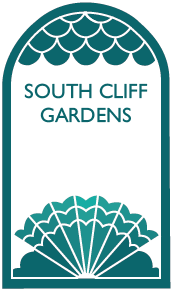Though the waters from which it takes its name and which first set Scarborough on the path to becoming Britain’s most popular coastal destination are long gone still no trip to South Cliff Gardens would be complete without a visit to the magnificent Grade II listed venue The Spa.

Today it is a world class conference and entertainment centre but it has a long and fascinating history and its popularity was integral to the development of the gardens as this success in turn led to the inclusion of other features such as the Spa Bridge and Cliff Lift as well as the construction of the gardens themselves as a place for wealthy visitors to both exercise and relax.
FASCINATING FACT: Henry Wyatt’s “Gothic Saloon” may be lost to history but he also designed Scarborough Town Hall, its original purpose was as the residence for prominent Scarborough banker John Woodall.
Until the early 19 th Century the Spa waters were commonly referred to as the Spaw and it was by this name that the first building to occupy the site was known. The Spaw House was a basic affair constructed of wood and used to dispense and sell the famous waters. In 1737 the Spaw House and wells from which the waters were drawn where lost to a cliff fall. Such was the importance of the waters to the town that within five weeks both wells had been recovered and by 1739 a large saloon with views out to sea had replaced the Spaw House.
TOP TIP: Don’t forget to visit the Italian Steps located just behind the Sun Court, they are the perfect place for a selfie.
This in turn was supplanted in 1839 by a Gothic style saloon designed by Henry Wyatt. It boasted a concert hall, garden and promenade but with a capacity of just 500 it was immediately deemed too small to meet the growing demands of visitors now flocking to the South side of the town.
A replacement was commissioned from famed Victorian Architect and Landscape Gardner Sir Joseph Paxton whose design’s provided room for up to 2000 visitors and included new features such as galleries off the improved main hall, a double promenade, shops and a band stand. He would later add further additions to the site including Prospect Tower and the impressive Italian Steps which can still be walked upon today. The new building proved to be a roaring success welcoming up to 4000 visitors a day during high season and making it the most popular concert venue outside of London. In 1876 disaster struck when fire destroyed the main building but remarkably less than three years later it reopened with a new grand hall.
Though the building has not experienced any further catastrophes it has seen a number of changes including the removal of Prospect Tower as well as several other original structures and the addition of a Ballroom. In the 1980’s a three phase program of works saw a huge investment in the Spa which not only modernised and improved its facilities but also sought to reinstate and preserve much of the original Victorian features which lend it its character.
TOP TIP: The Spa has the last remaining professional seaside orchestra in the country which dates back to 1912. They hold numerous concerts throughout the summer using the magnificent Sun Court for open air performances. There’s something for all ages including the hugely popular toddler friendly Teddy Bears Picnic.

